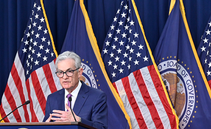A new swath of economic data proves the Fed is unlikely to cut interest rates early. However, the question of when remains.

The Federal Reserve’s favorite inflation indicator rose as expected in January, a new report on Thursday shows. The Personal Consumption Expenditure index, tracking overall price levels, rose 0.3% on a month-to-month basis and 2.3% in the year-ago period.
The PCE index represents a general figure of price trends in the US market. While the Federal Reserve considers it a key indicator for inflation trends, it prefers looking at core PCE instead. The latter indicator considers price trends excluding volatile goods like food and energy.
Core PCE increased by 0.4% in January compared to December, and 2.8% compared to January 2023, in both cases falling within market expectations. This is a positive trend from December’s 2.9% year-on-year growth, signaling that price growth is slowly cooling down.
While the news did not shock markets too much, it’s another sign that rate cuts will be coming later rather than sooner. The Federal Reserve increased interest rates to 5.25% between March 2022 and June 2023.
Founder of Inflation Insights Omair Sharif explained that the Fed was right to be cautious, as proved by Thursday’s readings. Inflation is far from a stable path towards the 2% target, and early rate cuts could disrupt the hard work done so far.
leggi anche
Federal Reserve FOMC Minutes Released

Unemployment, savings, and rate forecasts
Another indicator released on Thursday shows that the US job market is still very resilient.
Jobless claims in the third week of February rose by 215,000, exceeding market expectations but still in line with previous readings. Unemployment in the US remained at 3.7% in January, still at one of the lowest levels in recent history.
The latest PCE report also showed that Americans spend less than usual, often taking from their personal savings. January’s personal savings rate came in at 3.8%, much less than the 4.8% the same month last year. On the other hand, spending decreased by 0.1% for the month instead of the 0.2% increase forecast.
Overall, however, the country’s economy travels on solid rails, with recession fears almost completely gone for markets and investors alike.
While this gives a solid boost to Joe Biden ahead of the 2024 elections, it also raises questions on whether the Fed should cut rates in the summer or not. At the beginning of 2024, markets were pricing in with absolute certainty a first cut in March. Now, the same certainty is given for July.
But the Fed is lowering expectations for summer cuts as much as it can. There are not enough indicators to prove a summer cut is necessary, and there won’t be for several months ahead.




